Introduction
AI for telecommunications is changing how the telecom industry works. Telecom companies handle huge amounts of data, customer needs, and complex networks every day. Traditional methods are not enough to keep up with demand.
With AI, telecom providers can automate tasks, detect fraud, and improve customer service. Smart systems help them cut costs and make networks more reliable. Customers benefit too, with faster internet, fewer problems, and instant support.
- AI reduces errors and saves time
- AI makes networks more efficient
- AI improves customer experience
This guide will explain the benefits, use cases, challenges, and future of AI for telecommunications in simple terms.
1.What is AI for Telecommunications?
AI for telecommunications means using artificial intelligence to make telecom operations smarter and faster. Telecom companies deal with calls, internet traffic, and customer support all the time. AI studies this data to find patterns and give solutions that humans cannot manage as quickly.
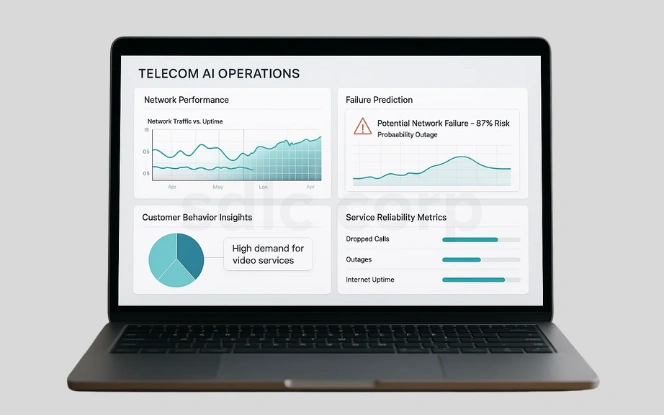
AI tools are used to watch over networks, prevent failures, and provide better service to customers. This means fewer dropped calls, fewer outages, and more reliable internet for users. Companies can also use AI to learn customer behavior and offer services that fit their needs.
- AI studies large amounts of data in real time
- AI predicts network failures before they happen
- AI helps companies offer personalized services
With AI for telecommunications, networks become easier to manage. Telecom providers can grow faster and keep up with customer expectations in a competitive market.
2.Benefits of AI for Telecommunications
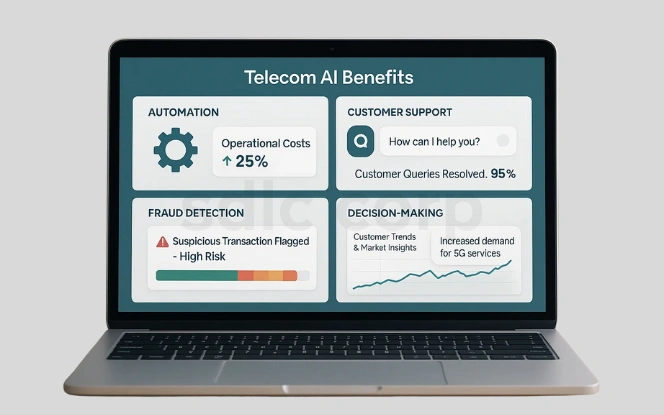
AI for telecommunications brings many advantages to the industry. One of the most important benefits is reducing costs. By automating tasks, AI cuts down the need for manual work. This saves money and reduces mistakes.
Another major benefit is customer satisfaction. AI systems like chatbots and voice assistants help customers at any time of the day. Quick answers make customers feel valued and supported. This builds trust and improves brand image.
- AI lowers operating costs through automation
- AI improves customer support with instant answers
- AI protects companies with fraud detection
AI also improves decision-making. By studying data in real time, AI helps companies understand customer needs and market trends. Telecom providers can then plan better and bring new services to market faster.
3.Key Use Cases of AI for Telecommunications
AI is being used in many ways in the telecom industry. Predictive maintenance is one of the most popular uses. Telecom networks often face outages and failures. AI predicts these problems and suggests solutions before they affect customers.
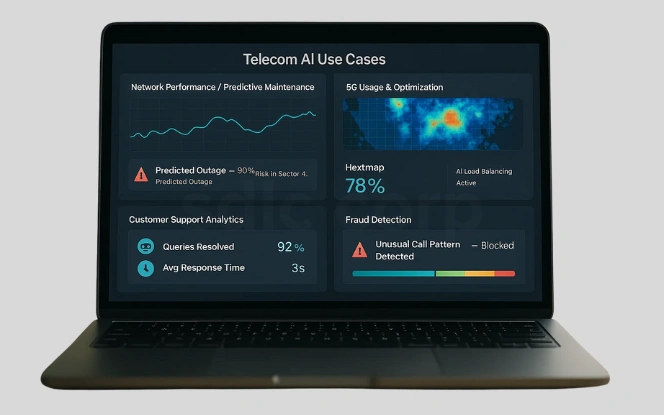
AI is also important in 5G networks. With more users and more data, 5G networks need smart tools to manage traffic. AI balances bandwidth and prevents congestion, so customers enjoy smooth and fast connections.
- AI predicts and prevents network issues
- AI supports 5G by balancing resources
- AI improves customer service with chatbots
Fraud detection is another big use of AI for telecommunications. AI can spot unusual patterns in calls or data usage. It blocks threats quickly, saving companies from losses. AI also helps with billing, network automation, and service delivery.
4.Future Trends of AI for Telecommunications
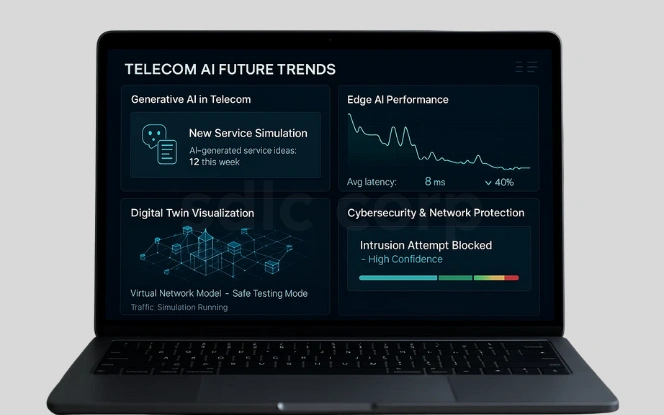
The future of AI for telecommunications is full of new opportunities. Generative AI is one key trend. It allows telecom companies to create new services, produce content, and design smarter customer interactions.
Another trend is AI at the edge. Edge computing processes data closer to where it is created. This makes networks faster and reduces delays. With AI at the edge, telecom providers can support smart cities and connected devices better.
- Generative AI for smarter telecom services
- Edge AI for faster data and better performance
- Digital twins for network testing and planning
Digital twins, which are virtual models of networks, will also grow in use. They help companies test systems safely before changes are made in real life. Combined with AI, this will lead to autonomous networks that manage themselves. AI will also play a bigger role in protecting networks from cyber threats.
5.Challenges of AI for Telecommunications
AI for telecommunications has many benefits, but it also comes with challenges. Data privacy is one of the biggest issues. Telecom companies store sensitive information like calls and location data. AI must handle this data carefully to keep customer trust.
Another challenge is cost. Building AI systems requires heavy investment in tools and skilled workers. Smaller telecom providers may not be able to afford this, which can widen the gap between large and small companies.
- AI raises data privacy and security concerns
- AI systems require high investment
- There is a shortage of AI professionals
There are also ethical concerns. AI must make decisions in a way that is clear and fair. The lack of skilled professionals makes it harder for companies to use AI well. Solving these challenges will be important for the growth of AI in telecom.
6.AI in Telecom Data Analytics
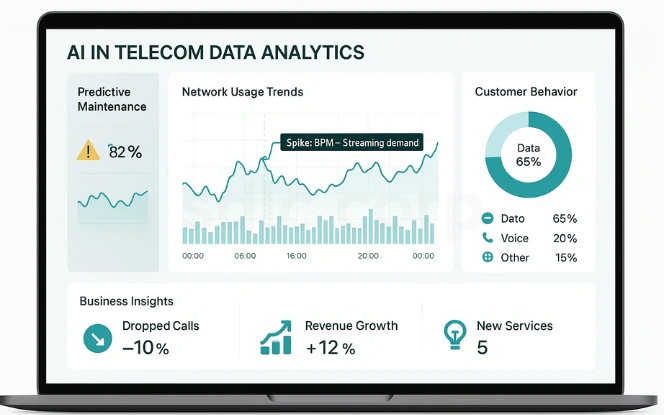
Telecom providers collect large amounts of data every day. Without the right tools, this data is wasted. AI for telecommunications makes data useful by finding patterns and insights. These insights help companies improve services, plan better, and grow faster.
AI studies customer behavior and network usage. With this knowledge, companies can personalize offers, manage demand, and prevent problems. It also helps in creating new revenue streams.
- AI studies customer behavior for better offers
- AI finds trends in network usage
- AI helps create new services and products
With AI in data analytics, telecom providers can make decisions faster and with more confidence. This makes them more flexible in a competitive market.
7.AI and Predictive Maintenance in Telecom
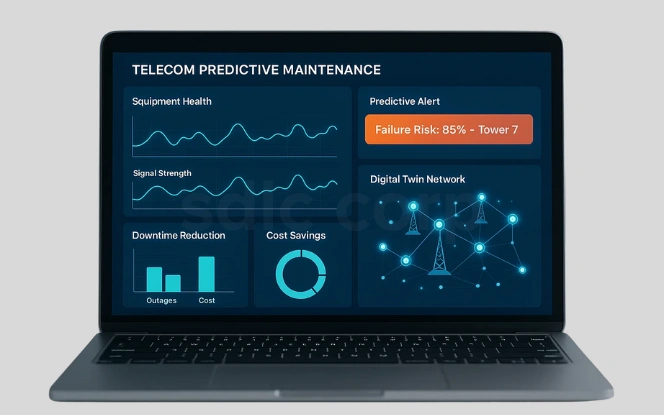
Network failures cost telecom companies both money and customer trust. AI predictive maintenance solves this problem by spotting issues before they become serious. It studies data from equipment, signals, and traffic patterns.
When AI finds early signs of failure, it alerts technicians. This reduces downtime and prevents major outages. Customers get a smoother experience, while companies save on repair costs.
- AI monitors signals and equipment in real time
- AI predicts failures before they happen
- AI reduces downtime and costs
Predictive maintenance also increases the lifespan of equipment. Telecom providers spend less on replacements and offer more reliable services.
8.AI in Telecom Fraud Detection
Fraud is a big issue in telecom. It can involve fake accounts, SIM card swaps, or unusual call patterns. AI systems can detect these threats faster than humans.
By studying real-time data, AI spots unusual activity and blocks it instantly. This protects both companies and customers. It also reduces revenue losses caused by fraud.
- AI detects unusual call or usage patterns
- AI blocks fraud in real time
- AI reduces financial losses from scams
With AI in fraud detection, telecom providers build trust and improve customer security. This makes the industry safer and more reliable.
Conclusion
AI for telecommunications has become a key part of the industry. It improves networks, supports 5G, enhances customer service, and prevents fraud. It also helps companies cut costs and deliver better services.
The future will bring even more changes with generative AI, edge AI, and digital twins. These tools will make networks faster, safer, and smarter. The challenges of cost, skills, and privacy must be solved, but the benefits are too great to ignore.
For telecom providers, the future of AI is not a question of choice but of speed. Those who act now will lead the industry, while others may fall behind.
Related Blogs:-
FAQ'S
What does AI for telecommunications mean?
AI for telecommunications means using artificial intelligence to improve services, networks, and customer support. It helps companies automate work and provide better results.
- Automates routine processes
- Improves network performance
- Enhances customer support
How does AI improve telecom customer service?
AI improves customer service by using chatbots and smart systems. Customers get faster help, personalized answers, and support at all times.
- Provides instant chatbot support
- Offers personalized solutions
- Resolves problems quickly
How is AI used in 5G networks?
AI helps 5G networks by managing traffic and predicting congestion. It ensures smooth service, even with many users online at once.
- Predicts and prevents congestion
- Balances bandwidth effectively
- Improves reliability and speed
What is the future of AI for telecommunications?
The future of AI in telecom will include autonomous networks, stronger security, and new services powered by generative AI.
- Autonomous, self-healing networks
- AI-driven cybersecurity solutions
- Generative AI for new services

















